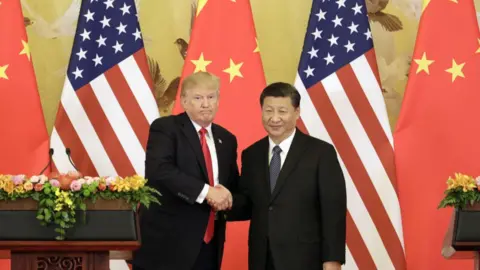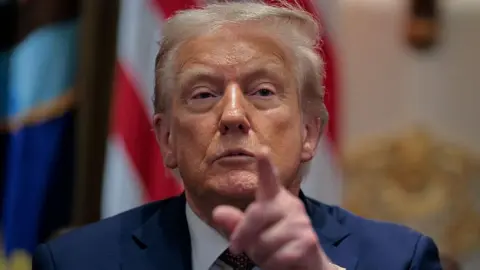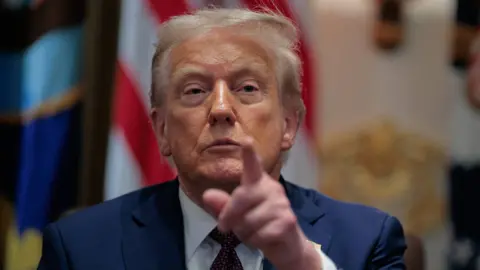In a move that could redefine the economic landscape, the United States and the European Union have successfully negotiated a new trade agreement after weeks of intense discussions among their top trade officials. This agreement comes at a pivotal time as it precedes another round of tariff discussions with China, highlighting the strategic importance of these negotiations.
Face-to-face negotiations between leaders in Washington and Brussels played a crucial role in finalizing the deal, a tactic that has proven effective for President Donald Trump in past agreements. The dynamic between the two parties is critical, as the EU refers to it as "the world's largest bilateral trade and investment relationship"—an essential factor for numerous businesses and jobs on both sides.
Both Trump and European Commission President Ursula von der Leyen are poised to frame this deal as a victory. The EU manages to avert harsher 30% tariffs, settling instead for a more manageable 15%. For the US, this translates to an anticipated influx of approximately $90 billion in tariff revenue based on recent trade statistics, alongside an expected $600 billion in investment from Europe.
However, while the deal is being presented as groundbreaking, key questions about the specifics remain unresolved. Queries about the timeline and areas of investment by the EU linger unanswered, which raises concerns about the practical implications of this agreement.
One central issue has been the persistent trade deficit, with the US importing $236 billion more from the EU last year than it exported. Trump has consistently criticized this imbalance, expressing that it represents American wealth unnecessarily exiting the country, even if the realities of international trade are intricate. Furthermore, the EU's stringent regulations across various sectors complicate the ability for American companies to penetrate the EU market compared to their European counterparts.
Ultimately, this agreement underscores Trump’s commitment to reshaping how the US engages in international trade relations. Achieving consensus among the diverse interests of the 27-nation EU underscores the complexity of these negotiations. Additionally, just days prior, a significant agreement with Japan was reached, along with other deals involving the UK, Vietnam, and Indonesia. However, the larger challenges of pending negotiations with Canada, Mexico, and China loom large.
As the US prepares for renewed discussions with China in Stockholm, the optimism surrounding the US-EU deal may bolster Washington's negotiating position. Yet, with China’s historically firmer stance, any setbacks in these high-stakes talks could heavily impact the global trade environment in the months ahead.




















